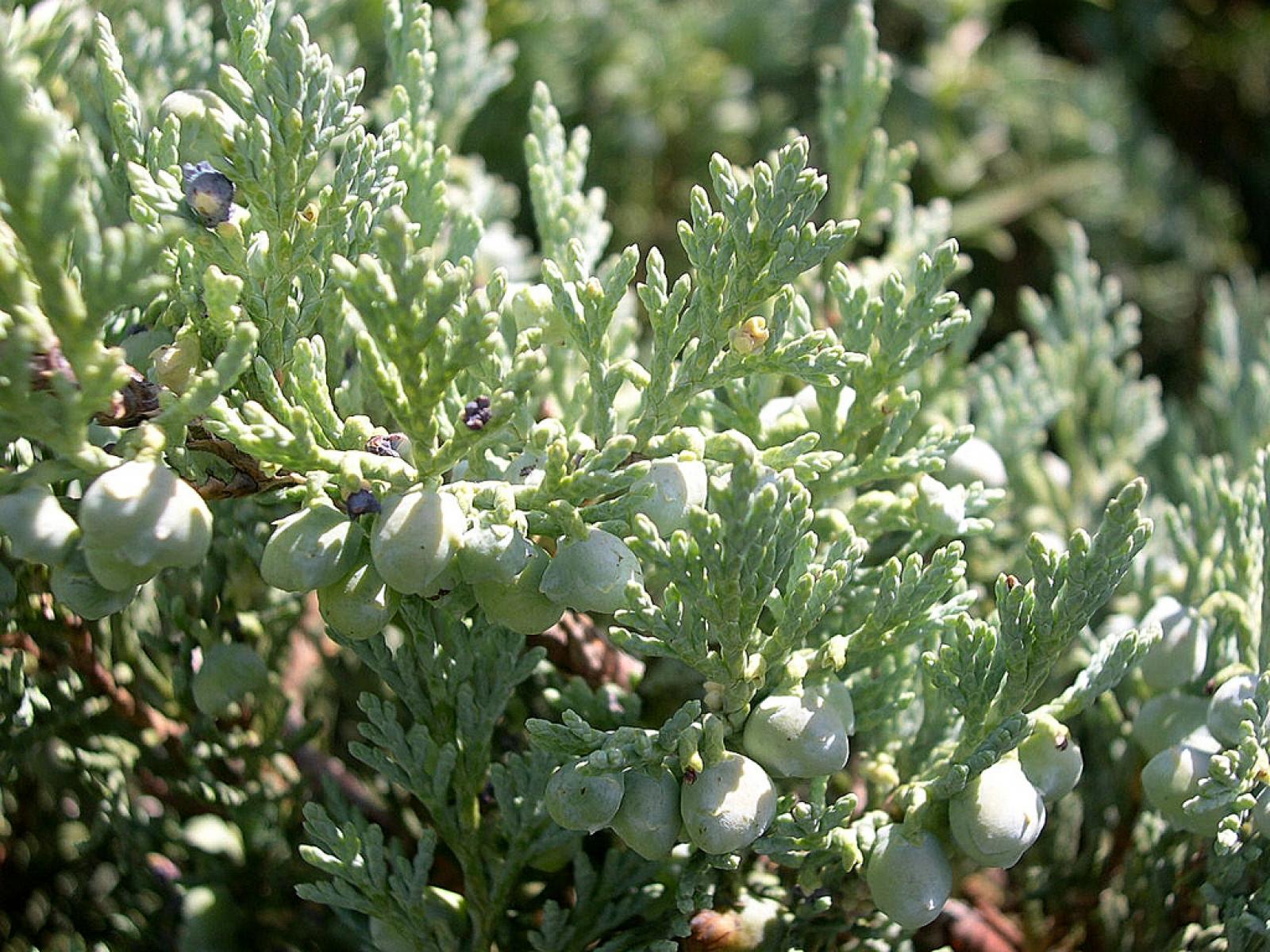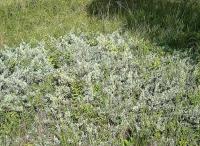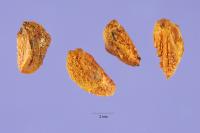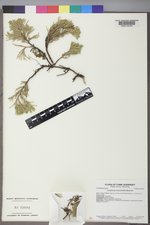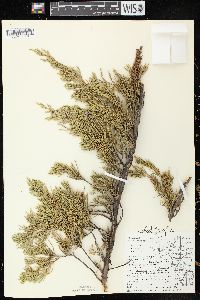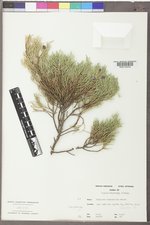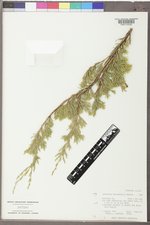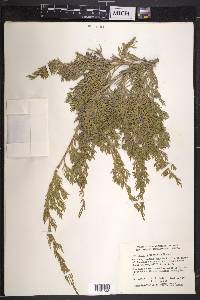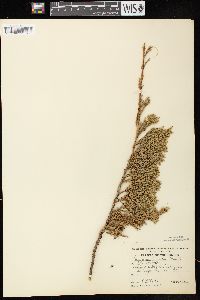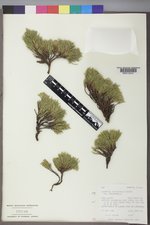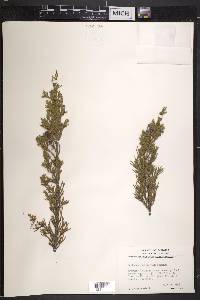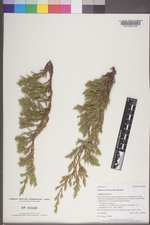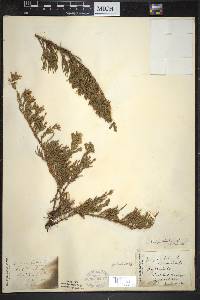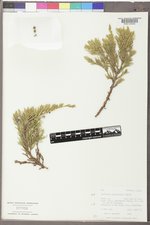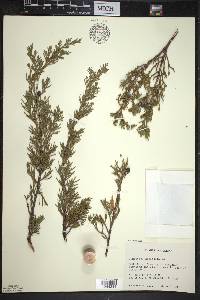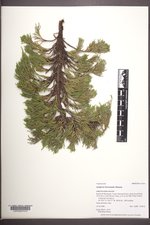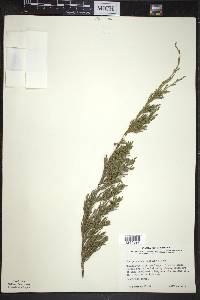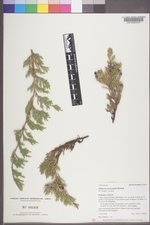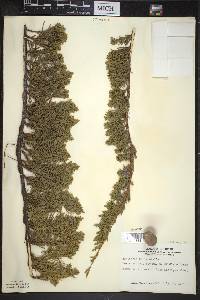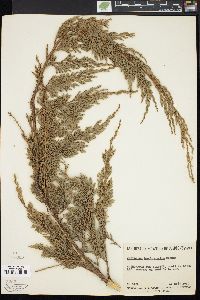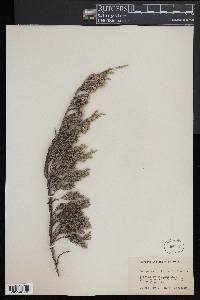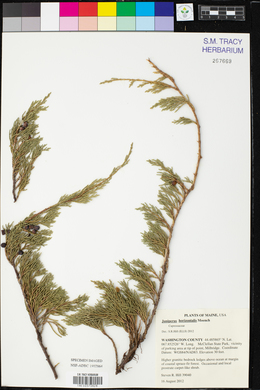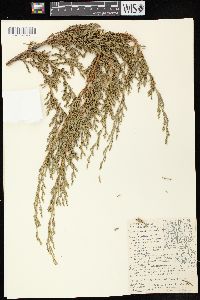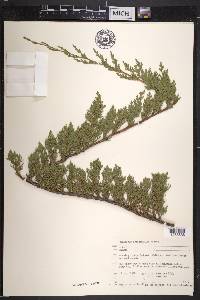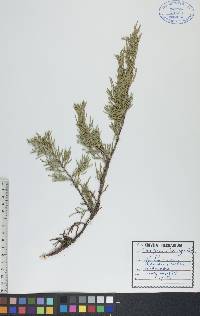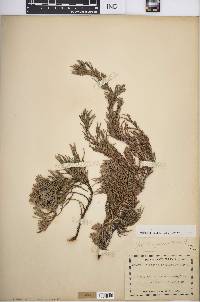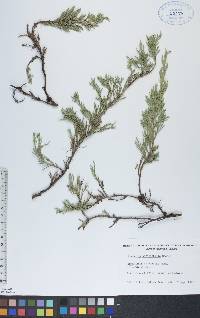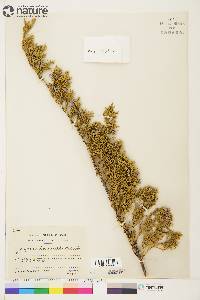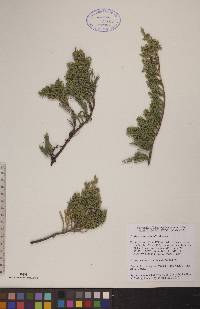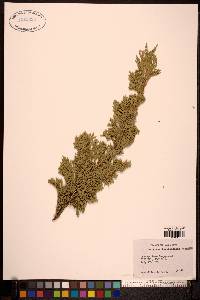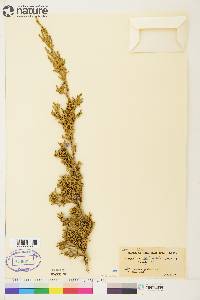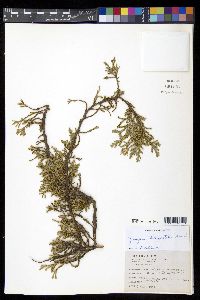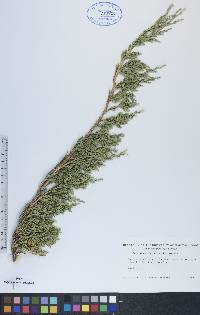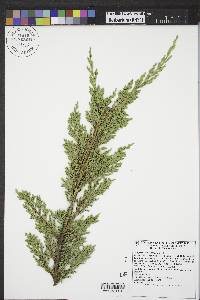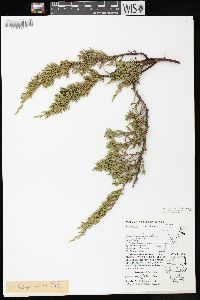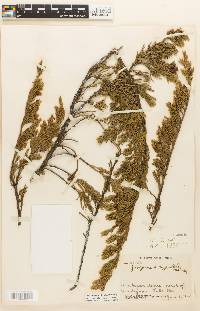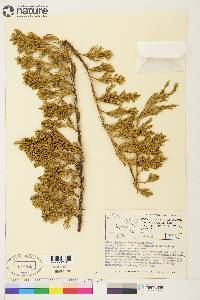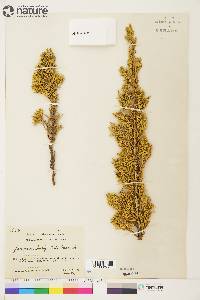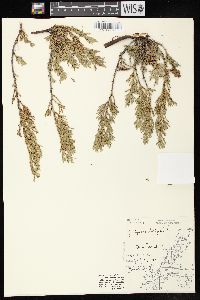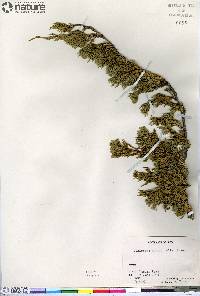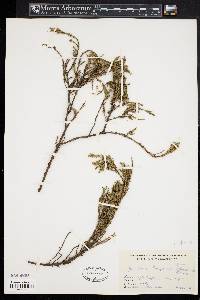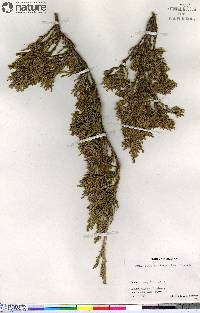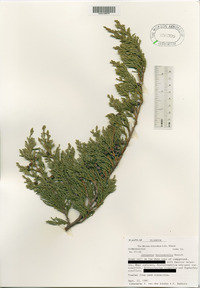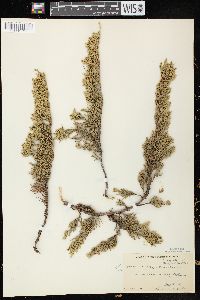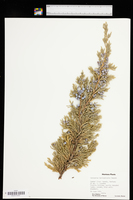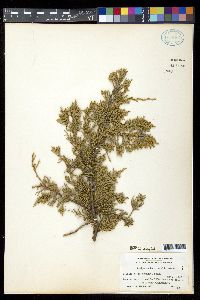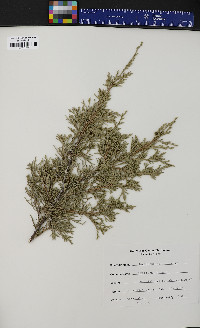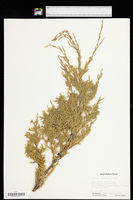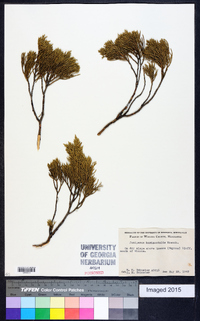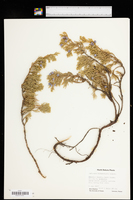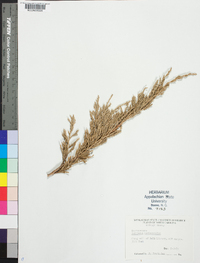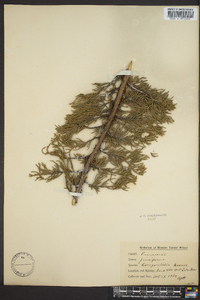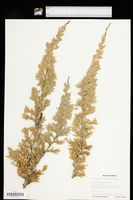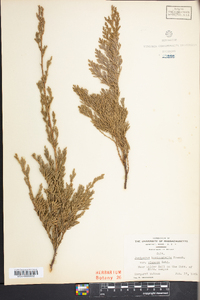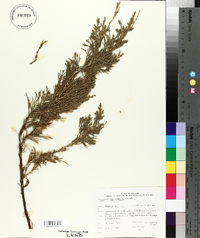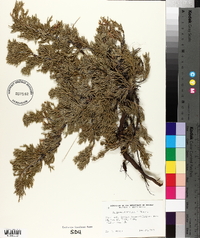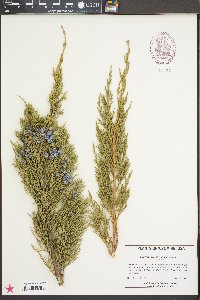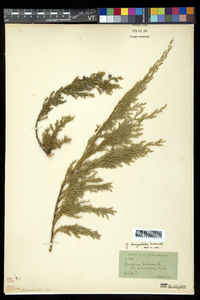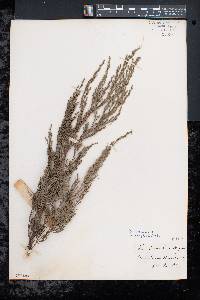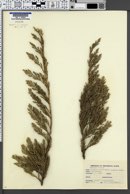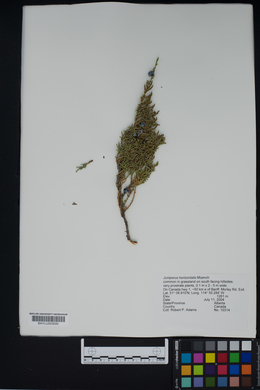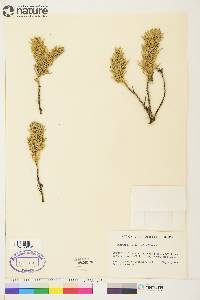
|
|
|
|
Family: Cupressaceae
Creeping Juniper, more...Waukegan juniper
[Juniperus horizontalis subsp. hamptonensis, moreJuniperus horizontalis subsp. neopangaea , Juniperus horizontalis var. argentea , Juniperus horizontalis var. douglasii Rehder, Juniperus horizontalis var. glauca , Juniperus horizontalis var. hudsonica Forbes, Juniperus horizontalis var. variegata , Juniperus hudsonica Forb., Juniperus prostrata Risso, Juniperus repens Nutt., Juniperus sabina f. prostrata (Pers.) Voss, Juniperus sabina var. procumbens , Juniperus virginiana var. prostrata (Pers.) Torr., Sabina horizontalis Rydb., Sabina prostrata Antoine] |
Shrubs dioecious, prostrate to decumbent; crown depressed. Bark brown, exfoliating in thin strips, that of small branchlets (5--10 mm diam.) smooth, that of larger branchlets exfoliating in wide strips or plates. Branches creeping; branchlets erect, 3--4-sided in cross section, ca. 2/3 or less as wide as length of scalelike leaves. Leaves green but turning reddish purple in winter, abaxial gland elliptic, conspicuous, exudate absent, margins entire (at 20´ and 40´); whip leaves 4--8 mm, not glaucous adaxially; scalelike leaves 1.5--2 mm, mostly overlapping to 1/3 their length, apex rounded or obtuse to acute and apiculate, spreading. Seed cones mostly maturing in 2 years, of 2 distinct sizes, generally with curved peduncles, globose to ovoid, 5--7 mm, blue-black to brownish blue when mature, lightly glaucous, soft and resinous, with 1--2(--3) seeds. Seeds 4--5 mm. 2 n = 22. Sand dunes, sandy and gravelly soils, prairies, slopes, rock outcrops, and stream banks; 0--1000 m; St. Pierre and Miquelon; Alta., B.C., Man., N.B., Nfld., N.W.T., N.S., Ont., P.E.I., Que., Sask., Yukon; Alaska, Ill., Iowa, Maine, Mass., Mich., Minn., Mont., Nebr., N.H., N.Y., N.Dak., S.Dak., Vt., Wis., Wyo. Juniperus horizontalis , a prostrate species, hybridizes with the trees J . virginiana and J . scopulorum (R. P. Adams 1983; N. C. Fassett 1945; M. Palma-Otal et al. 1983) and is closely related to both. The hybrid between J . horizontalis and J . scopulorum has been named J . ´ fassettii Boivin.
Shrub 10 - 30 cm tall, 1.2 - 2.4 m spread Leaves: green to bluish green with a whitish waxy coating (glaucous), few needle-like leaves in opposite pairs. Most leaves are scale-like, 1 - 4 mm long, egg-shaped to oblong with a short-pointed tip and gland on the back, and pressed against the stem and overlapping for a soft plume-like texture. Foliage turns purplish in winter. Form: trailing with small, upright branches, mat-forming. Cones: unisexual, with separate pollen and seed cones produced on different plants (dioecious). Pollen cones: very small. Seed cones: with scales fusing to become berry-like, borne near ends of branches on recurved stalks, bluish to greenish black with a slight whitish waxy coating (glaucous), 5 - 8 mm in diameter, spherical, usually with three to five seeds per cone. Pollination occurs from late April to early May. Similar species: Thuja occidentalis is easily distinguished from the junipers found in the Chicago Region. It has flattened branches, all scale-like leaves, and woody cones. The junipers of the region all have berry-like cones and branches that are not flattened. Juniperus communis has all needle-like leaves, and Juniperus virginiana is a tree with both scale-like and needle-like leaves and cones on short, straight stalks. Habitat and ecology: Low dunes near Lake Michigan and sandy prairies. Occurence in the Chicago region: native Notes: Many cultivars of J. horizontalis are available for landscape use. The species can hybridize with J. virginiana. Etymology: Juniperus is the Latin name for juniper. Horizontalis means "growing horizontally." Author: The Morton Arboretum Branches closely prostrate, often much elongate, with numerous erect branches 1-3 dm; lvs mostly scale-like and appressed, varying from ovate and 1-2 mm to oblong and to 4 mm; cones on short, recurved peduncles, blue, 5-8 mm thick; seeds mostly 3-5, not pitted. Rocky or sandy places; nearly transcontinental in Can., from Nf., Lab., and Que. to Yukon and n. B.C. and disjunct in Alas., more scattered s. to Me. (esp. along the coast), N.H., N.Y., Mich. (notably along the shores of the Great Lakes), Wis., Minn., and Wyo. Hybridizes with J. virginiana. Gleason, Henry A. & Cronquist, Arthur J. 1991. Manual of vascular plants of northeastern United States and adjacent Canada. lxxv + 910 pp. ©The New York Botanical Garden. All rights reserved. Used by permission. |

